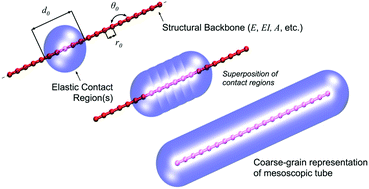Mutable polyelectrolyte tube arrays: mesoscale modeling and lateral force microscopy
Abstract
In this study, the pH-dependent friction of layer-by-layer assemblies of poly(allylamine hydrochloride) and poly(acrylic acid) (PAH/PAA) are quantified for microtube array structures via experimental and simulated lateral force microscopy (LFM). A novel coarse-grain tube model is developed, utilizing a molecular dynamics (MD) framework with a Hertzian soft contact potential (such that F ∼ δ3/2) to allow the efficient dynamic simulation of 3D arrays consisting of hundreds of tubes at micrometer length scales. By quantitatively comparing experimental LFM and computational results, the coupling between geometry (tube spacing and swelling) and material properties (intrinsic stiffness) results in a transition from bending dominated deformation to bending combined with inter-tube contact, independent of material adhesion assumptions. Variation of tube spacing (and thus control of contact) can be used to exploit the normal and lateral resistance of the tube arrays as a function of pH (2.0/5.5), beyond the effect of areal tube density, with increased resistances (potential mutability) up to a factor of ∼60. This study provides a novel modeling platform to assess and design dynamic polyelectrolyte-based substrates/coatings with tailorable stimulus-responsive surface friction. Our results show that micro-geometry can be used alongside stimulus-responsive material changes to amplify and systematically tune mutability.



 Please wait while we load your content...
Please wait while we load your content...